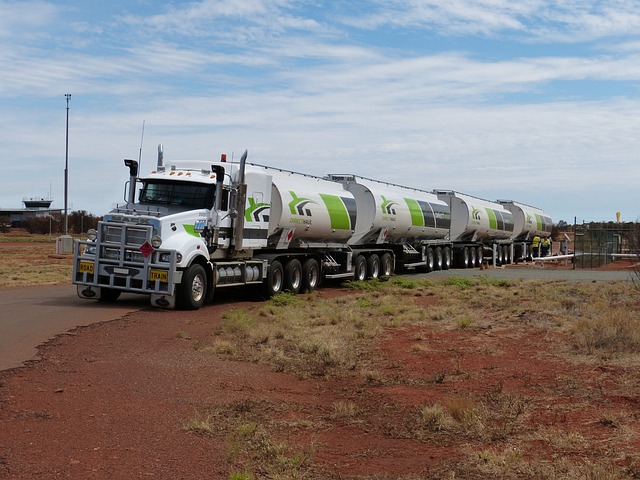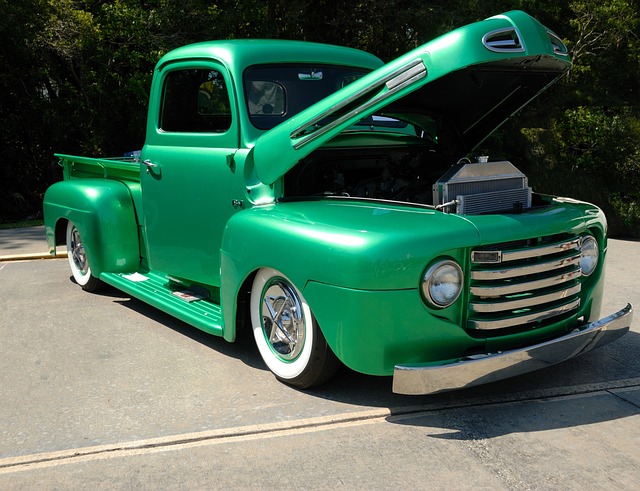When selecting a truck battery, it's crucial to consider factors such as energy consumption, duty cycle, environmental influences, and vehicle specifics like refrigeration units or advanced safety features. Truck batteries come in two main types: starting (SLI) for high-current bursts needed for engine starts, and deep-cycle batteries for sustained power, which are more suitable for trucks with frequent deep discharges. Higher amp hour (Ah) rated batteries are advantageous for trucks with additional electrical components or those operated in extreme cold where recharging might be less effective. For long-haul trucks with continuous energy demands, a higher Ah rating ensures they can run without frequent recharging and maintain performance even in challenging environmental conditions. Regional service trucks, with more predictable charging opportunities, may not require as high an Ah rating but should still have sufficient capacity to support daily operations. Proper battery selection and maintenance are key to optimizing fleet efficiency, reducing downtime, and ensuring safety and reliability on the road. Regular checks and maintenance are necessary to extend the life of the truck battery and protect against premature aging, regardless of the Ah rating.
When it comes to optimizing your fleet’s performance, understanding the amp hour rating of your truck batteries is paramount. This article delves into the critical aspects of selecting the optimal amp hour rating for your heavy-duty vehicles, considering factors such as daily routes, duty cycles, and the distinction between deep cycle and starting batteries in trucks. We’ll guide you through assessing your energy needs, calculating amp hours for different service applications, and maintaining peak battery performance to extend longevity. With insights tailored for long-haul and regional service trucks, this piece is an essential read for fleet managers looking to enhance their operations with the right truck battery amp hour rating.
- Understanding Truck Battery Amp Hour Ratings: The Basics
- Factors Influencing Optimal Amp Hour Rating for Your Fleet
- Assessing Your Truck's Energy Needs: Daily Routes and Duty Cycles
- The Role of Deep Cycle vs. Starting Batteries in Heavy-Duty Vehicles
- Calculating Amp Hours for Long-Haul and Regional Service Trucks
- Maintenance and Longevity: Maximizing Your Truck Battery's Performance with the Right Amp Hour Rating
Understanding Truck Battery Amp Hour Ratings: The Basics

When it comes to selecting the optimal amp hour rating for truck batteries, understanding the fundamentals is crucial for maintaining efficiency and reliability on the road. Amp hour ratings, expressed in Ah or Ampere-hours, quantify the amount of electrical charge a battery can store and supply over a given period. For trucks, which often run complex electrical systems, including refrigeration units, navigation systems, and various other accessories, choosing the right amp hour rating is not just about capacity but also about performance.
Truck batteries are typically categorized into starting (SLI) and deep-cycle types. SLI batteries are designed for short bursts of high current to start the engine, while deep-cycle batteries can handle repeated discharges and charge cycles, making them ideal for applications requiring sustained power output. The amp hour rating for a truck battery should reflect its intended use; a higher rating is beneficial for trucks with additional electrical loads or those that are regularly subjected to deep discharges, such as in extreme cold where batteries might not fully recharge. Understanding the specific needs of your truck and the types of trips you undertake will guide you in selecting the appropriate amp hour rating. Factors like the battery’s size, the vehicle’s energy consumption patterns, and environmental conditions should all be considered to ensure that your truck’s battery performs optimally throughout its service life.
Factors Influencing Optimal Amp Hour Rating for Your Fleet

When selecting the optimal amp hour rating for your fleet’s truck batteries, several critical factors must be considered to ensure peak performance and reliability. Firstly, the type of operations your trucks are engaged in will significantly influence the required battery capacity. For instance, trucks used for short-haul deliveries with frequent idle times may not demand as much amp hour rating as those involved in long-haul transport or those equipped with refrigeration units, which draw power continuously. The nature of the electrical load is another decisive factor; the more electrical components a truck has, such as telematics systems, onboard computing devices, and advanced safety features, the higher the amp hour rating needed to support these systems without compromising battery life.
Additionally, environmental conditions can affect battery performance. Operating in extreme temperatures, whether hot or cold, can reduce battery efficiency. In such cases, opting for truck batteries with a higher amp hour rating can provide the necessary reserve capacity to handle these challenges. Furthermore, the driving patterns and routes your fleet covers are also pertinent. Mountains and off-road terrains place additional demands on the electrical system, necessitating more robust truck batteries with larger amp hour ratings to manage the increased power needs during climbing or traversing difficult terrain. Lastly, consider the lifecycle costs of the batteries, as higher initial amp hour ratings can lead to longer service life and less frequent replacements, ultimately offsetting the upfront investment. By carefully evaluating these factors, you can determine the most suitable amp hour rating for your fleet’s truck batteries, ensuring operational efficiency and reducing the likelihood of unexpected downtime due to flat or depleted batteries.
Assessing Your Truck's Energy Needs: Daily Routes and Duty Cycles

When determining the optimal amp hour rating for your truck battery, a thorough assessment of your vehicle’s energy needs is paramount. This involves understanding both your daily routes and the specific duty cycles your truck undergoes. Truck batteries are subject to varied demands, from idling for extended periods to intense power draws during start-up or operational functions. To begin with, consider the length and nature of your daily routes. Long-haul trucks, for instance, may require batteries with higher amp hour ratings due to their reliance on electric systems for climate control, navigation, and entertainment while parked overnight. On the other hand, local delivery vehicles might use less power in a 24-hour cycle, allowing for a lower amp hour rating, provided the battery can handle the peak current demands during operation.
Duty cycles are another critical factor in selecting the right battery. This refers to the patterns of heavy battery usage versus periods of low or no demand. For example, a truck that frequently operates in off-road conditions might use more power for its electrical systems and accessories due to the increased strain on the battery from engine-starting processes and additional loads like winches or lights. Conversely, urban delivery trucks might experience less intense duty cycles but still require a dependable battery during peak hours. Understanding your truck’s energy consumption patterns will help in selecting a truck battery with an amp hour rating that matches the energy output required for your truck to operate efficiently without frequent recharging or risk of power loss at critical moments. Always consider the specific demands of your application when selecting a truck battery, as this will ensure optimal performance and longevity for your vehicle’s needs.
The Role of Deep Cycle vs. Starting Batteries in Heavy-Duty Vehicles

In heavy-duty vehicles, such as trucks, the selection between deep cycle and starting batteries is pivotal for optimal performance and reliability. Deep cycle batteries are engineered to withstand frequent and deep discharges, making them ideal for applications that require a steady flow of energy over extended periods, such as electric auxiliary systems in trucks. These batteries can handle numerous charge-discharge cycles without compromising their lifespan or capacity, which is essential for powering ancillary equipment like refrigeration units, onboard computers, and communication devices. On the other hand, starting batteries, also known as cranking batteries, are specifically designed to deliver large bursts of energy for a short duration—enough to start the truck’s engine under various conditions. The primary role of a starting battery is to provide the necessary voltage to initiate the internal combustion process, which requires a high power output but only sporadically throughout the vehicle’s operation.
When equipping heavy-duty trucks with batteries, it’s crucial to consider the Amp Hour (Ah) rating of the battery to ensure it aligns with the truck’s specific energy demands. A truck battery with an optimal Ah rating will ensure that all onboard electrical systems function as intended, from the engine start to the operation of auxiliary systems. For instance, a truck with a refrigeration unit and other electronic devices will require a deep cycle battery with a high Ah rating to support these continuous loads. Conversely, if the focus is solely on engine starting, a smaller, high-power starting battery would suffice. In any case, understanding the difference between deep cycle and starting batteries allows fleet operators to select the most appropriate truck batteries for their vehicles, thus enhancing reliability and efficiency on the road. Truck owners and operators should consult with experts or refer to manufacturer specifications to determine the best battery type and Ah rating for their trucks’ unique demands.
Calculating Amp Hours for Long-Haul and Regional Service Trucks

When selecting the optimal amp hour rating for truck batteries, particularly for long-haul and regional service trucks, it’s crucial to consider the diverse demands these vehicles face. Long-haul trucks are often equipped with a variety of electronics, from GPS systems to refrigeration units, which draw power consistently. Calculating the amp hours required involves assessing the total power consumption of all onboard systems while accounting for factors such as battery efficiency, temperature extremes, and the length of time the truck will be operational between charges. For long-haul trucks that travel extensively without frequent access to charging, a higher amp hour rating ensures the truck battery can handle extended use without failure. In contrast, regional service trucks, which operate on shorter routes and may return to a depot daily, have different power needs. Their batteries might not require as high an amp hour rating as their long-haul counterparts, but it’s still important to select a truck battery with enough capacity to support daily operations without significant degradation over time. The right truck battery is essential for the reliability and safety of the truck, influencing everything from engine start-up in cold conditions to the operation of critical electronic systems during long shifts. Properly calculating amp hours and selecting the appropriate rated truck battery can significantly impact a fleet’s efficiency and reduce downtime due to power issues.
Maintenance and Longevity: Maximizing Your Truck Battery's Performance with the Right Amp Hour Rating

When it comes to maintaining and ensuring the longevity of your truck battery, selecting the optimal amp hour rating is paramount for maximizing performance. Truck batteries are subject to a variety of demands, from powering electrical systems to providing the necessary energy for starting the engine. An amp hour (Ah) rating indicates the amount of power a battery can deliver over a period of one hour; a higher Ah rating means more power availability and longer operation times. For instance, if your truck is equipped with advanced telematics or frequently used for applications that require constant power draw, opting for a high amp hour battery can prevent excessive discharge and safeguard against premature aging.
In addition to the immediate energy needs of your truck, consider the environmental factors it encounters, such as extreme temperatures, which can influence battery performance and lifespan. Adequate cooling or heating systems can complement a high amp hour rating by maintaining optimal operating conditions. Regular maintenance practices, including checking cell-specific voltages, ensuring connections are clean and tight, and topping off the water level in flooded lead-acid batteries (if applicable), further contribute to the health of your truck battery. By selecting the right amp hour rating and adhering to proper care and maintenance, you can significantly extend the life of your truck battery, ensuring it operates reliably under a wide range of conditions. This not only reduces downtime but also ensures that your truck’s electrical systems function as intended, providing a safe and efficient driving experience.
When selecting the optimal amp hour rating for truck batteries, it’s crucial to consider factors such as your fleet’s energy requirements, duty cycles, and the types of trucks in operation. Understanding the basics of amp hour ratings is foundational, ensuring that your truck battery provides the necessary power for both starting and deep cycling applications. By assessing your daily routes and calculating amp hours specific to long-haul or regional service trucks, you can tailor the battery’s performance to your operational needs. Proper maintenance and selecting the right amp hour rating not only enhance longevity but also contribute to cost savings over time. With these strategies in mind, truck operators can make informed decisions to optimize their fleet’s energy management, ensuring reliability and efficiency on the road.



